Arash Ajoudani – Italian Institute of Technology, Genova
Antonio Bicchi – University of Pisa & Italian Institute of Technology, Genova
Giorgio Cannata – University of Genova
Domenico Chiaradia – Scuola Superiore Sant’Anna, Pisa
Giulio della Porta – ABB
Alessandro Gasparetto – University of Udine
Hermes Giberti – University of Pavia
Michael Hofbaur – University of Klagenfurt (Austria)
Olivier Lambercy – ETH, Zurich (Switzerland)
Sauro Longhi – Polytechnic University of Marche, Ancona
Pedro Neto – University of Coimbra (Portugal)
Enrico Pagello – University of Padova
Giacomo Palmieri – Polytechnic University of Marche, Ancona
Alessandra Papetti – Polytechnic University of Marche, Ancona
Michael Rathmair – Joanneum Research, Klagenfurt (Austria)
Renato Zaccaria – University of Genova

Short Bio
Massimo Callegari is Professor of Machine Mechanics at the Dept. Industrial Engineering & Mathematical Sciences of the Polytechnic University of Marche in Ancona. He previously worked as project leader in the factory automation business then he moved to the University of Genova as a researcher.
He took part in many national and international research projects and recently coordinated the programme Human Digital Flexible “Factory of the Future” Laboratory of the Marche Region (budget of almost 9 M€) and was responsible of the i-LABS Laboratory.
He is presently involved in the EDIH4Marche EU project, is coordinator of the Macro-node @univPM of the Competence Center Artes 4.0 and President of i-Labs Industry S.C.A.rL., an innovation infrastructure for the digital transition of SME’s.
His fields of research are mainly the analysis and design of innovative mechatronics devices and the study of advanced and industrial robotics, especially with reference to human centred manufacturing.
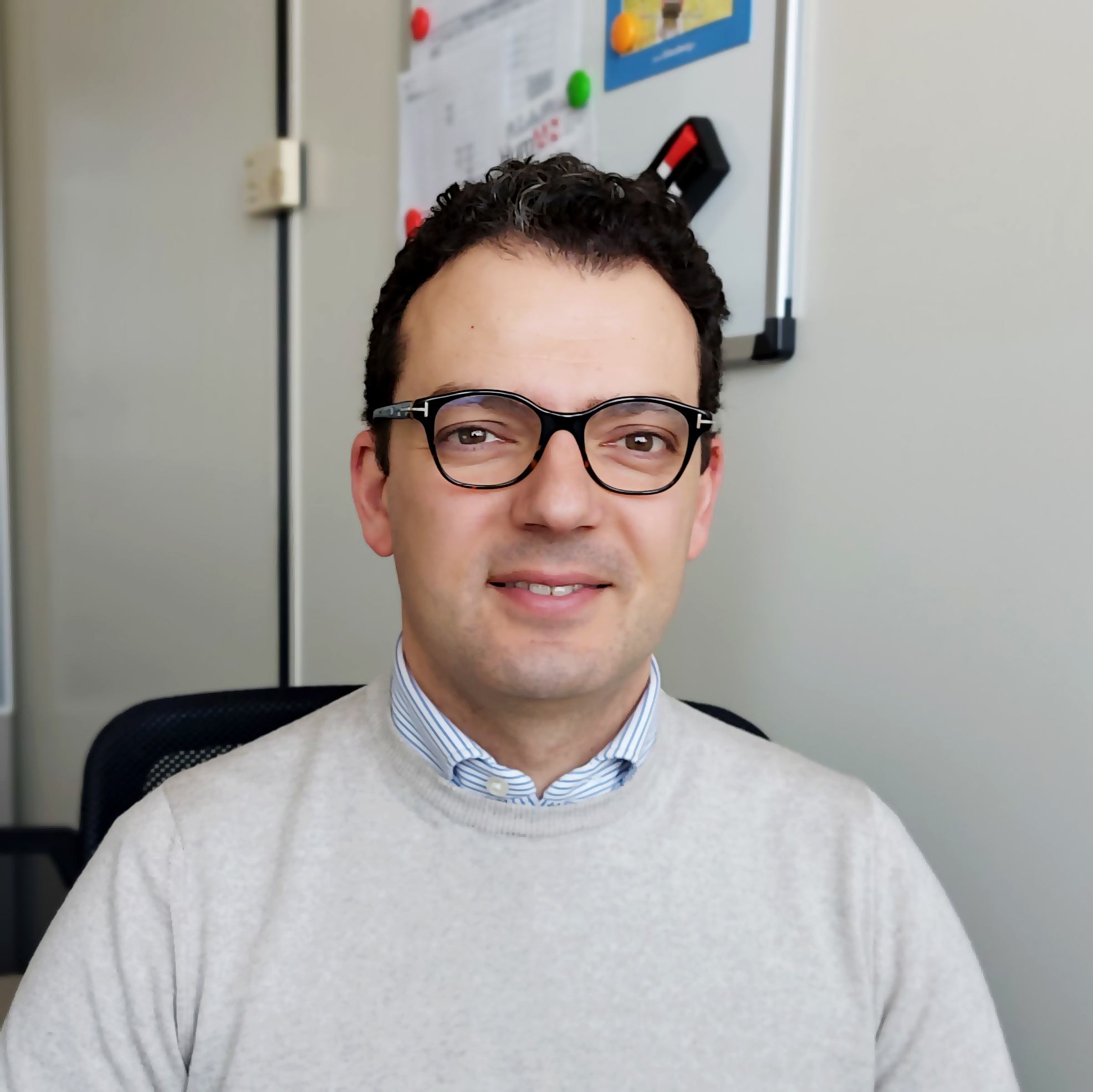
Short Bio
Giacomo Palmieri is Associate Professor of Mechanics Applied to Machines at the Faculty of Engineering of Polytechnic University of Marche. He has relevant research experience in machine mechanics, robotics and biomechanics. He is author of more than 90 publications, 41 of which in peer-reviewed international journals, and 2 textbooks on fundamentals of mechanics and biomechanics. Main research topics are parallel kinematics machines, reconfigurable kinematics machines, micro-mechanics, dynamics of human motion, underwater robotics, collaborative robotics and human-robot collaboration. He is member of the topical advisory panel for Robotics, MDPI for the following topics: collaborative robotics; mechatronics and biomechanics; kinematic and dynamic analysis and synthesis of mechanical and biomechanical systems. He is the director of the robotic section of the i-Labs Industry Laboratory, Jesi (AN), operating in the field of industry 4.0 technologies.
Abstract
The digital transition is an accelerating trend common to many fields of human life. Just as informatic and IoT systems have spread in recent years to become large-scale consumer goods, so robots will spread in the future not only in manufacturing, but also in living environments and in the care of elderly and disabled people. This talk aims to outline the main developments in robotics focusing particularly on human-robot synergy, a hallmark of today’s technological transformation brought by Industry 4.0, and even more strengthened by the novel Industry 5.0 paradigm. The concept of human-centric robotics will be central in industrial (collaborative robotics and mobile collaborative robotics), home (assistive robotics) and biomedical fields (rehabilitation robotics). Innovation in these areas will be possible thanks to recent developments in mechatronics, sensors, artificial intelligence, and hardware and software systems for safe and secure applications.

Short Bio
Full Professor in Applied Mechanics Ing-Ind/13 at the department of Electrical, Computer, and Biomedical Engineering, University of Pavia. Professor of “Automated mechanical system design” and “Robotic systems design”. Coordinator of the MSc Industrial Automation Engineering of the University of Pavia. Member of the PhD school in “Electronics, Computer Science and Electrical Engineering” at the University of Pavia.
Research activity concerns synthesis and design of mechatronic systems with the focus on the theory of mechanisms and robotic systems, and on the methodologies to choose and use actuators for industrial automation. Particular emphasis is placed on the design of parallel manipulators from both a theoretical and an experimental point of view. In the last years, the research activity included subjects related to the development of devices and technology for additive manufacturing with particular focus on the use of multi degrees of freedom robotic solutions in this field.
Abstract
Cutting-edge technologies such as artificial intelligence, Internet of things, big data, and the like are changing production systems, economic models and industrial strategies. New economic sectors are entering automation and robotization and require not only new technologies but also new professional figures and new skills. Human-Robot Interaction (HRI) is a field of study dedicated to understanding, designing, and evaluating robotic systems for use by or with humans. This talk will overview the Human-Robot interaction with particular focus on the industrial field and cobot solutions.
Several topics of this field will be introduced, among them: introduction to collaborative robotics, safety considerations and standards, how to make a robot a cobot, introduction to the collaborative programming approaches and industrial examples.
The “Human in the loop” paradigm as a human-robot interaction perspective will also be introduced. In particular, the focus will be on describing the framework of this paradigm and its main applications.
Tactile sensing for safe robot operations and HRI

Short Bio
Giorgio Cannata received the Master Degree in Electronic Engineering from the University of Genova in 1988 and is currently Full Professor of Robot Dynamics and Control and Automatic Control.
His research interests are in the areas of robotics, mechatronics and automatic control. In particular, over the years he has worked on the development of underwater manipulators, bioinspired robotics systems, and robot tactile systems and processing technologies for robot control and safe human-robot interaction.
Giorgio Cannata has been Coordinator of the European Project ICT FP7 – Roboskin, on the development of skin-based technologies and capabilities for safe autonomous and interactive robots, and is currently Coordinator of the European Project HE – Sestosenso, on the development of innovative solutions for the control of robots and human-robot interaction using augmented proximity and tactile spatial perception.
Giorgio Cannata is the Coordinator of the Italian Doctorate Program in Robotics and Intelligent Machines.
Abstract
The challenge in innovative industrial robotics operations is motivated by the growing need to integrate production line operators with robots, equipment, and site-specific factory information according to the principles of Industry 4.0 (interconnected automation) and the forthcoming Industry 5.0 (humanization and re-use of resources). This leads to the need for robot systems that could operate and interact safely with a limited need of out-of-the-robot infrastructure, and possibly reducing robot setup times and costs thus increasing the flexibility of the shopfloor configuration. Tactile sensing and perception are key elements to the development of tactile feedback based reactive and cognitive control solutions enabling the safe and effective human-robot interaction. Tactile sensing technology is a challenging engineering activity developed over the years and still open to major developments. Also, tactile data processing is a complex process rapidly evolving with the introduction of machine learning solutions.

Short Bio
Pedro Neto is an Associate Professor at the Mechanical Engineering Department and coordinator of the Collaborative Robotics Laboratory at the University of Coimbra. He is a two-time recipient of the Impact and International Publications Award at the Faculty of Science and Technology, received more than a dozen awards, and is in World’s Top 2% Scientists Rank from Elsevier. Pedro Neto served as vice president of the Portuguese Robotics Society, is a member of the IEEE Committee on Factory Automation, associate editor in refereed journals, and scientific committee member of flagship conferences. His current research interests include human-robot interaction and collaboration, machine learning, soft robots, and advanced robot applications in the manufacturing domain. He co-authored more than 100 papers and collaborated with more than 100 companies in projects and consulting, some of them granted by the European Commission in the prestigious HORIZON framework.
Abstract
Humans and robots are increasingly sharing common workspaces and tasks. In such a scenario, robots need to safely interact, collaborate and learn with humans. The human-robot interactive process may rely on cognitive interfaces (using gestures, human behaviour, anticipation) and physical interfaces featuring physical contact with the robot. Reinforcement learning and sim-to-real represent a step towards building autonomous robot learning with a higher-level understanding of the world. All the above interfaces require safe robots, robots that can avoid collisions with moving humans/objects in unstructured environments. The research challenges for the future will be discussed, as well as the issues related to the implementation of collaborative robotic systems in industry. Laboratory and industry use cases will be presented.
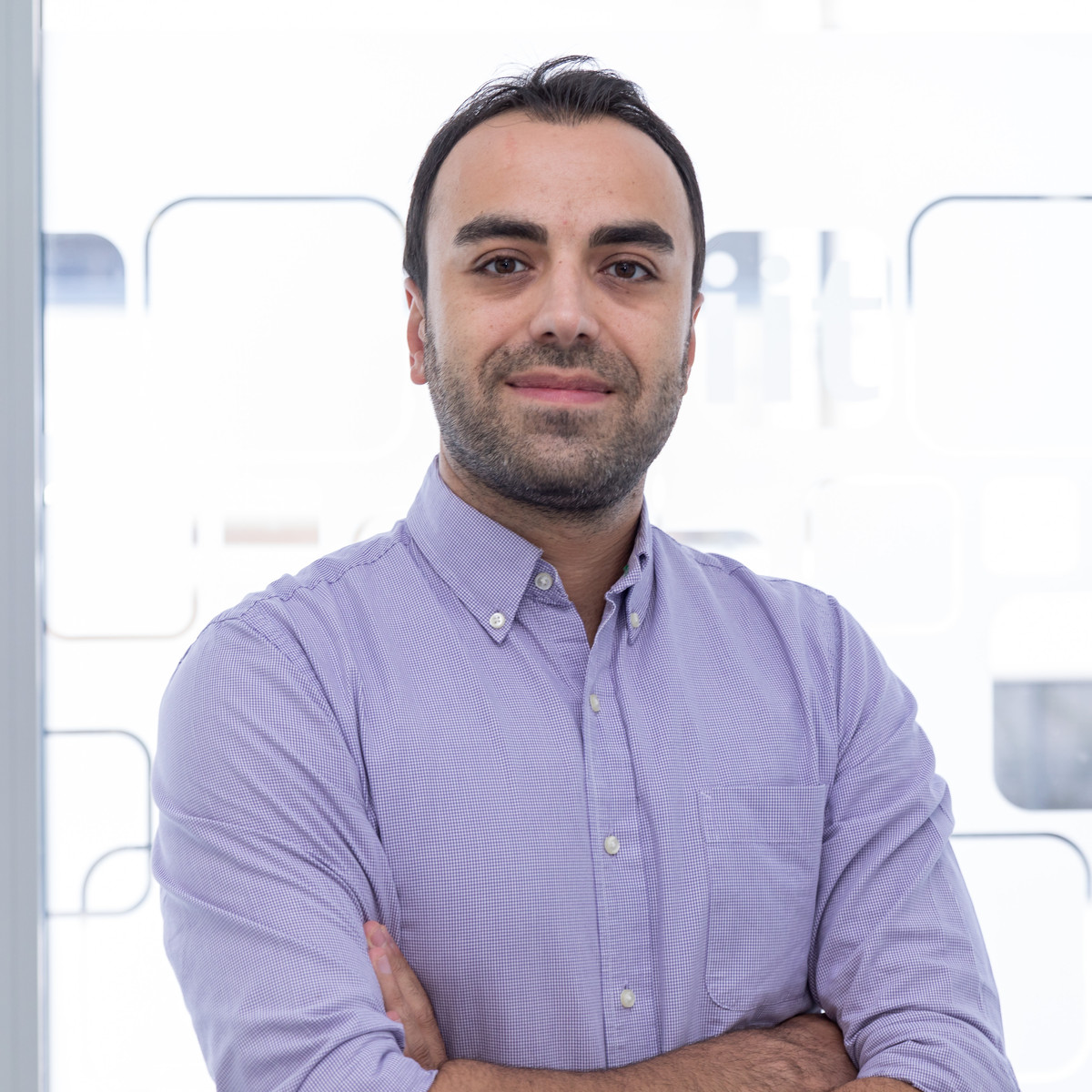
Short Bio
Arash Ajoudani is the director of the Human-Robot Interfaces and Interaction (HRI²) laboratory at IIT. He is a recipient of the European Research Council (ERC) starting grant 2019 (Ergo-Lean), the coordinator of the Horizon-2020 project SOPHIA, the co-coordinator of the Horizon-2020 project CONCERT, and a principal investigator of the HORIZON-MSCA project RAICAM. He is the recipient of several international awards including the IEEE Robotics and Automation Society (RAS) Early Career Award 2021, the Amazon Research Awards 2019, Solution Award 2019 (MECSPE2019), the KUKA Innovation Award 2018, and a number of best paper awards in conferences. His PhD thesis was a finalist for the Georges Giralt PhD award 2015 – best European PhD thesis in robotics. He is the author of the book “Transferring Human Impedance Regulation Skills to Robots” in the Springer Tracts in Advanced Robotics (STAR), and several publications in journals, international conferences, and book chapters. He is currently serving as an elected IEEE RAS AdCom member (2022-2024), and as chair and representative of the IEEE-RAS Young Professionals Committee. He has been serving as a member of scientific advisory committee and as an associate editor for several international journals and conferences such as IEEE RAL, ICRA, IROS, ICORR, etc. He is a scholar of the European Lab for Learning and Intelligent Systems (ELLIS). His main research interests are in physical human-robot interaction, mobile manipulation, robust and adaptive control, assistive robotics, and tele-robotics.
Abstract
This talk presents a hybrid learning and optimization framework for mobile manipulators for complex and physically interactive tasks. The framework exploits an interface to obtain intuitive and simplified human demonstrations and combines it with learning techniques to encode and generate the learned task requirements in terms of position, velocity, and force profiles. Using the trajectories and force profiles generated from the demonstrated skills, the interaction or other task-related parameters of the robot can be re-optimized online to increase robot adaptation to the varying environmental/task conditions. The extension of this controller to several loco-manipulation and human-robot interaction scenarios will be presented.
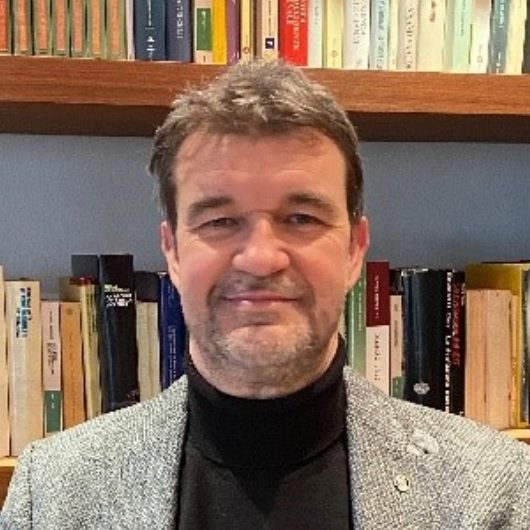
Short Bio
Alessandro Gasparetto (Rovigo – Italy, 26 October 1968) received the MSc in Electronic Engineering from the University of Padova, Italy, in 1992; the MSc in Mathematics from University of Padova, Italy, in 2003; the PhD in Mechanics of Machines from University of Brescia, Italy, in 1996. He is Full Professor of Mechanics of Machines at the Polytechnic Department of Engineering and Architecture, University of Udine (Udine, Italy), where he is the head of the research group in Mechatronics and Robotics, as well as the Head of the Department. He has been included in the ranking of the top 2% most quoted and authoritative scientists in the world, published by researchers at Stanford University (2019 and 2021). He is the Chair of IFToMM Italy, the Italian branch of IFToMM (the International Federation for the Promotion of Mechanism and Machine Science) and the Chair of the IFToMM Permanent Commission for the History of Mechanism and Machine Science. His research interests are in the fields of: modeling and control of mechatronic systems, robotics, mechanical design, industrial automation, mechanical vibrations. He is author of more than 200 international publications and has been involved in the scientific and organizing committees of several conferences, as well as in many research projects, at the regional, national and European level.
Abstract
Motion planning, defined as the combination of path planning and trajectory planning, is a fundamental issue in robotics. In this speech, the main aspects related to path and trajectory planning will be described. An overview of the principal approaches will be carried out, with a focus on some specific algorithms. Applications in laboratory, as well as in industrial environment, will be presented.

Short Bio
Domenico Chiaradia is an Assistant Professor of Mechanical Engineering (ING-IND/13) focusing on Robotics at Sant’Anna School of Advanced Studies, Pisa, Italy. He leads the group that develops flexible and portable exoskeletons, and soft exosuits in the Human Robot Interaction (HRI) area of the Institute of Mechanical Intelligence (IIM).
He received the B.S. and M.S. degrees with honours in control theory and automation engineering from the Polytechnic University of Bari, Italy, in 2011 and 2014 respectively, and he received his Ph.D. degree in perceptual robotics at the Sant’Anna School of Advanced Studies, Pisa, Italy.
His current research interests include physical human-robot interaction, rigid and flexible exoskeletons and soft exosuits for assistance and rehabilitation, mechanical design and control of flexible joints, and haptic interfaces.
He is one of the founding member of the Next Generation Robotics, a Sant’Anna spin-off operating in the collaborative and industrial robotics domain
Abstract
With the advent of collaborative robotics and robotics 5.0, the application of robots in physical contact with the human for carrying out cooperative activities both in the industrial and service field has become quite widespread.
The range of application range from co-bots, telepresence systems and wearable robotics to mention some of the most relevant ones.
There are however a number of issues that need to be tacked to ensure a proper and safe behavior of robot in strict contact with the human.
In this talk we will overview some fundamental aspects of the design of robots to be employed for teleoperation and telemanipulation, facing the issues related to the stability of bilateral teleoperation, physical human-robot cooperation, considering the issues of stability of human-in-the-loop, and finally for the design of exoskeletons and exosuits, with particular reference to the ergonomic and kinematic issues, such as the design of series elastic actuators

Short Bio
Antonio Bicchi is Professor of Robotics at the University of Pisa, Senior Scientist at the Italian Institute of Technology in Genoa, and Adjunct Professor at the Arizona State University.
His main research interests are in Robotics, Haptics, and Control Systems. He has published more than 500 papers on international journals, books, and refereed conferences. For his fundamental research on human and robot hands the European Research Council awarded him with several grants. He is the scientific coordinator of the JOiiNT Lab, an advanced tech transfer lab with leading-edge industries in Bergamo, Italy. He is the recipient of several awards and honors.
He is the Editor in Chief of the International Journal of Robotics Reserach (IJRR) and has been the founding Editor-in-Chief of the IEEE Robotics and Automation Letters (2015-2019). He has organized the first WorldHaptics Conference (2005). He is a founder and President of the Italian Institute of Robotics and Intelligent Machines (I-RIM).
Abstract
We do not know exactly how robots of the future will look like, but both the layman and the expert agree that they will not be like the heavy, rigid machines we have seen moving clumsily and somewhat menacingly in the past. Many researchers are indeed focusing on how to build softer robots which can move naturally around in an environment shared with humans.
Gentleness and strength, safety and efficiency, capability and adaptability, smoothness and effectiveness are the contradictory goals that such a naturally moving machine should achieve. In the talk, I will discuss how new materials and design approaches, new sensors and actuators, new control approaches, and new human-robot interfaces can enable the next generation of robots for assisting and cooperating with humans. The focus will be on robot hands, one of the most complex and powerful parts of our body which roboticists strive to emulate with great difficulties.

Short Bio
Enrico Pagello received his “Laurea” Degree in Electronic Eng. from the Univ. of Padua-Italy in 1972. Until 1983, he was a Researcher at the Inst. of Biomedical Eng. of CNR. In 1983 he joined the School of Eng. of Univ. of Padua, where he was a Full Prof. of Computer Science until Oct. 2017. During 1977-78, he was a Visiting Scholar at the AI Lab of Stanford Univ. He was a Senior JSPS Fellow at the Univ. of Tokyo in 1994 and at Keio Univ. in 2008. His current research interests include Multi-robot Systems, Robot Programming Languages, Cloud Robotics and Task and Motion Planning. He was a General Chair of the 6th IAS Conf. in July 2000, and of RoboCup-2003 He founded the SIMPAR Conf. Series in 2008. He was a President of the Int. Society for Intelligent Autonomous Systems from 2004 to 2012. He is a Co-founder of IT+Robotics, an industrial Spin-off of Univ. of Padua. He is currently a Fellow of the School of Eng. of the Univ of Tokyo and of Univ. of Padua, and a Life Member of IEEE.
Abstract
The application of AI to Robotics dates back to early ‘70s, when pioneering scientists established a permanent link between these research areas at MIT and Stanford in USA, and at Edinburg in Europe. Then, since ‘90s, the dichotomy, between the formal school of thought and the behavioral one, which had marked the early years of the research, were overcome by the development of several innovative approaches that have certified how AI can not only influence the applications of intelligent autonomous systems to the social area, but also help to build smart manufacturing systems. Based on a closer integration of sensor processing, a strict human-robot interaction, a cooperative ability of MRS, and the access to cloud computing and powerful learning algorithms, the performances’ level of those systems raised up. After having outlined the previous scenario, this Talk will be focused on the integration of motion planning with task planning that has regained strength since a decade ago.

Short Bio
I graduated in Electronic Engineering from UNIVPM. Shortly after, I embarked on a career as an IT Consultant. It didn’t take long for me to realize that the industry was my calling, and I began my professional journey with ABB in the realm of robotics.
I am involved in various aspects of my work, which encompass programming and creating integrated or tailored solutions for our clients. Additionally, I offer support to help clients comprehend and fully utilize our products.
Abstract
After a short presentation of ABB, the lecture will be about the current challenges that the industry sector is facing such as the shortage of labor, the logistics crisis and the consequent need for productions that can respond quickly to market changes. Given this context we will talk about how this transformation is driven by automation and digitalization of processes. For this to be possible, machines, with robots at the forefront, will need to be safe, simple and reliable. We will take a quick glance to the effect on the collaborative robotics market, which is growing by double digits year by year, and which is embracing applications that evolve towards simplicity of use, regardless of the technical capabilities of the user. Then, a variety of real applications will be presented, showing how important it is to develop increasingly powerful and intelligent software interfaces that allow the user to “teach” (no longer program) the robot the task to be performed and what are the future trends.

Short Bio
Alessandra Papetti is an Assistant Professor within the Design Tools & Methods group at the Department of Industrial Engineering and Mathematical Sciences of Università Politecnica delle Marche. She graduated in Management Engineering in 2011 and she received her Ph.D. degree in Mechanical and Management Engineering in 2016 at the same university. Her topics of research concern methods and tools for ergonomic analysis and design, Human-Centered Manufacturing, Human-Machine Interaction and User–Centered Design.
Abstract
This lecture aims to provide participants with knowledge and skills to understand and apply ergonomics principles in the areas of occupational health and safety. An overview of methods and tools commonly used to assess risk factors in industrial settings is provided, as well as advanced techniques based on the use of sensors and vision-based systems. Both physical and cognitive ergonomics will be addressed to improve the psychophysical well-being of the operator, which can be supported by technologies enabling industry 4.0.

Short Bio
Prof. Hofbaur is Director and Chief Scientist of JOANNEUM RESEARCH ROBOTICS and Professor for Modular Robotics at the Alpen-Adria University Klagenfurt. Prior to these roles, he was Professor of Automation and Control at the private university UMIT in Hall/Tyrol, Visiting Professor at the Space Systems Laboratory and the AI Laboratory of M.I.T. in Cambridge USA, and Lecturer at the Graz University of Technology. His research and teaching activities focus on systems and control theory as well as artificial intelligence for the realization of robot systems and automated machines that are safe for humans.
Abstract
Using the collaborative mode of operation “power and force limitation” requires a safety-oriented application design and a safety validation through risk assessment and qualified measurements. However, performing this measurement-based validation according to EN/ISO 10218 and ISO/TS 15066 is non-trivial and interlaboratory comparative tests can help to train and qualify safety-experts on valid reference data sets. The talk explains the principle of such an exemplary test, outlines the cornerstones of good metrological practice, and refers to the necessary resources for performance and self-testing based on valid reference data sets.

Short Bio
Michael Rathmair studied electrical engineering and information technology at the TU Wien and graduated in 2018 with a doctorate degree from the Institute of Computer Technology. In addition, he was a research associate and integrated in various national and international research projects, as well as in university teaching. Since March 2019 he is working as a research assistant and technical test center manager of the ROBOTICS Evaluation Lab (REL) at the Institute for ROBOTICS of the JOANNEUM RESEARCH Forschungsgesellschaft mbH. His professional interests are primarily in the research and development of verification, analysis and testing processes for robot applications in the sense of a flexible cyber-physical system. In order to be able to optimally integrate these processes into modern day-to-day production, he is also actively involved in the national and international committees for the robot safety standard ISO 10218.
Abstract
The presentation gives an overview about safety requirements which have to be fulfilled when placing an industrial robot system in commercial operation. The basic aspects of risk assessment according to ISO 12100 and the related specific robot requirements according to ISO 10218 will be discussed. Finally, in the presentation trends and recent developments in robotic system technologies and the associated impact on safety assessments will be highlighted.
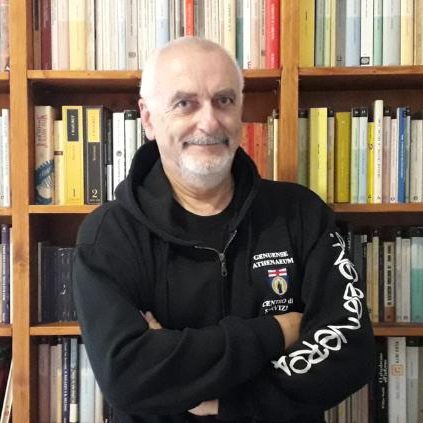
Short Bio
Renato Zaccaria graduated in Electronic Engineering with honors in 1974. He was full professor until 2019, and is now retired, being appointed as Honorary Professor. He was trained in periods of study and research at MIT (USA) and the University of York (UK) in the years ’70s and ’80s. He has been among the founders of the International Master’s Degree “EMARO” (2008, Master Degree in Advanced Robotics) that he headed locally until 2018. Then he was one of the founders of the extension to Japan (JEMARO). After his retirement, he continues his didactic and managerial contribution to Robotics Engineering, EMARO and JEMARO at the Department of Informatics Robotics, Bioengineering and Systems Engineering (DIBRIS). Since 2008 he is professor of Mobile Robots and Advanced and Robot Programming in EMARO/JEMARO, also teaching courses at the partner sites in Nantes and Warsaw. He was the head of a research and teaching laboratory in Robotics. He has been researcher / project leader of many national and international research projects on topics of Robotics, Artificial Intelligence and Computer Science. He had many industrial research contracts with companies. He has also served on Councils and Committees of many scientific events. He is still Scientific Responsible of the national project DIONISO, including several Italian Universities, École centrale de Nantes, CNR, CINECA, and private companies. He is one of the founders of the academic spin-off Teseo, whose mission is help, monitoring and assistance for the autonomous life of fragile subjects (elderly, sick, disabled), based on Ambient Intelligence, Blockchain and Artificial Intelligence. In Teseo he is the responsible for the technology transfer process. His current activity is aimed at specialized teaching, “transcultural” teaching, research for the application of ICT technologies and Artificial Intelligence to man-robot interaction, and the autonomous life of fragile people.
Abstract
Today, more than AI and Robotics, we should talk about intelligent technologies and Robotics, enclosed in a very broad outline. Traditional ontological AI was the underpinning for all rational and decision-making aspects of a robot. Today, statistical AI has deprived the former of several tasks, depriving others of other traditional disciplines, (for example, in artificial vision). The elements that define an intelligent robot have grown non-linearly, and include aspects apparently distant from robotics, such as the cloud, communications, distributed architectures, security, learning, multi-sensory interaction with humans and so on. New hardware, software and system technologies enable algorithmic approaches that were unsustainable until yesterday. Remote interaction (e.g. virtual / augmented / mixed reality) define interaction scenarios different from the traditional ones. Intelligence is an emerging product of an architecture rather than an algorithmic approach. The talk aims to present a multiplicity of examples and arrive at a synthesis with possible indications for the development lines of the next decade.

Short Bio
Olivier Lambercy is a Senior Scientist (tenure) and the co-Director of the Rehabilitation Engineering Laboratory at ETH Zurich in Switzerland. He obtained the PhD degree from the National University of Singapore in 2009. His research focuses on the development and clinical application of technological solutions to improve upper limb assessment, therapy and assistance after neurological injuries, with a specific interest on robotic tools to support hand function. He serves as Associate Editor for the Journal of Neuroengineering and Rehabilitation since 2017, and was the co-chair of the CYBATHLON Symposium in 2016 and 2020.
Abstract
Neurorehabilitation faces many open challenges due to the increasing number of neurological patients, the limited number of healthcare professionals and the raising healthcare costs, which ultimately impact the access to quality therapy. Technology-based solutions, such as robotics, bear high potential to enable a paradigm shift in neurorehabilitation models currently heavily relying on hospital stays/visits. In this presentation, I will describe our work on the development and clinical evaluation of technology-based solutions to support hand rehabilitation of neurological patients along the continuum of care, from the hospital bedside to their home. I will discuss key enablers and challenges in view of the development and acceptance of such advanced medical devices for rehabilitation.
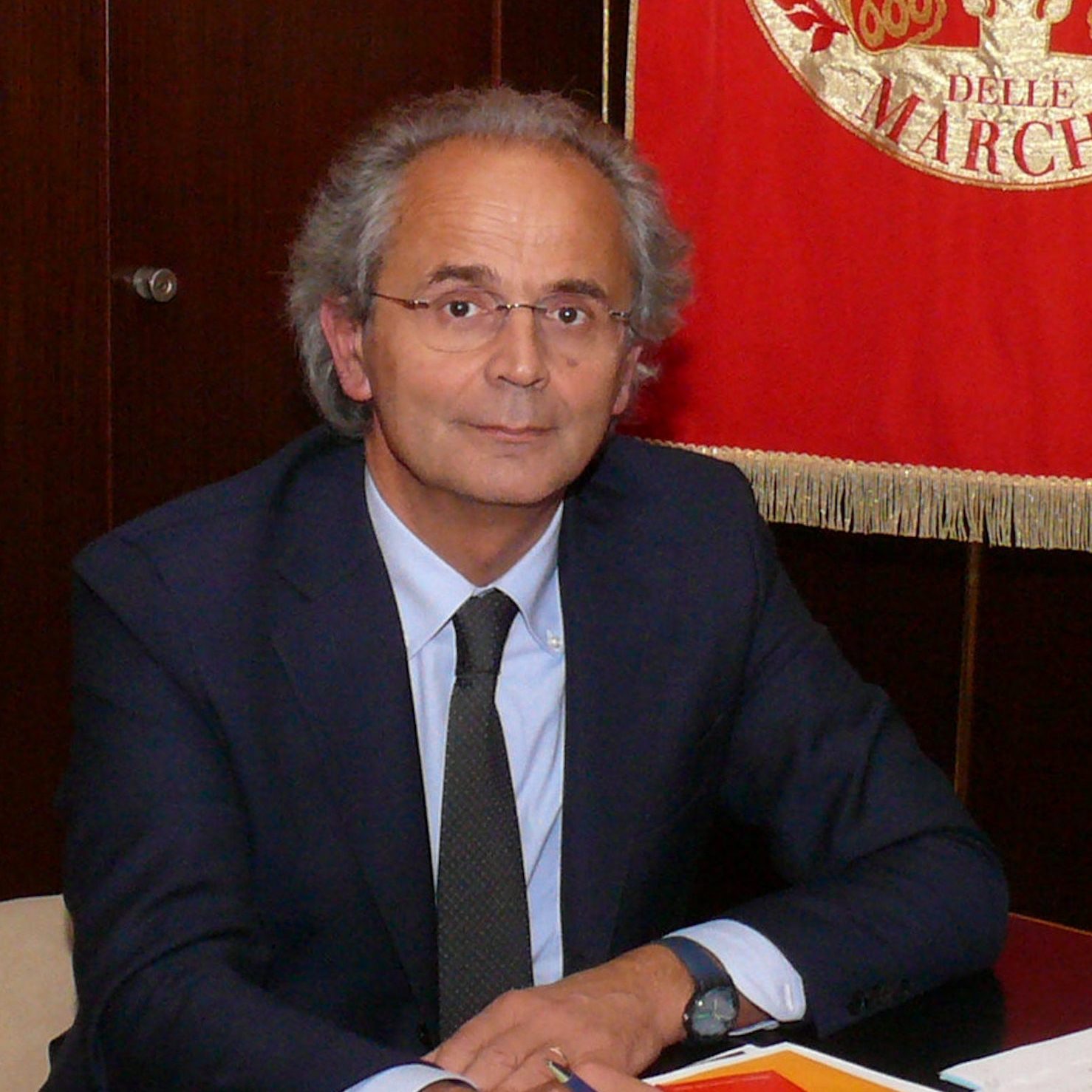
Short Bio
He holds the position of Full Professor of Automatic Control at the Università Politecnica delle Marche, President of the Society of Professors and Researchers on Automatic Control and national member of Board of Governors of the Joint Research Centre – EU. He was Rector of Università Politecnica delle Marche from 2013 to 2019, and President of the GARR Consortium, the Italian national IT network for universities and research, from 2014 to 2022. His research interests include modeling, identification and control of linear and non-linear systems, control of mobile robots, submarine vehicles, ships and unmanned aerial vehicles, cooperative control of autonomous agents, service robots for applications assistive to support mobility and cognitive actions, home and building automation, web technology on process control and remote control laboratories, decentralized control over networks, sensor networks, power management in hybrid cars, electric motor control, system integrated control, management and control of renewable energy resources, efficient management of energy systems, automatic fault detection and isolation. He has published more than 550 articles in international magazines and newspapers and is the author of four patents. He is a component of the Scientific and Technical Committee of the University Centre Innovation and Entrepreneurship (Engineering Faculty) for technology transfer and the creation of new high technology companies in Ambient Assisted Living.
Abstract
The progress of new technologies with continuous reduction of their costs provides interesting opportunities to support users in living activities. In this prospective, robot technologies introduce interesting challenges to support user needs and to increase the quality of life. A cleaning robot is of interest for all people. Smart wheelchairs and assisted manipulators improve the independent living of users with different needs. The aim of this lecture is to describe the innovative and interesting research activities for robots in inter–active and assisted living, with a specific focus on elder-care assistive robots.